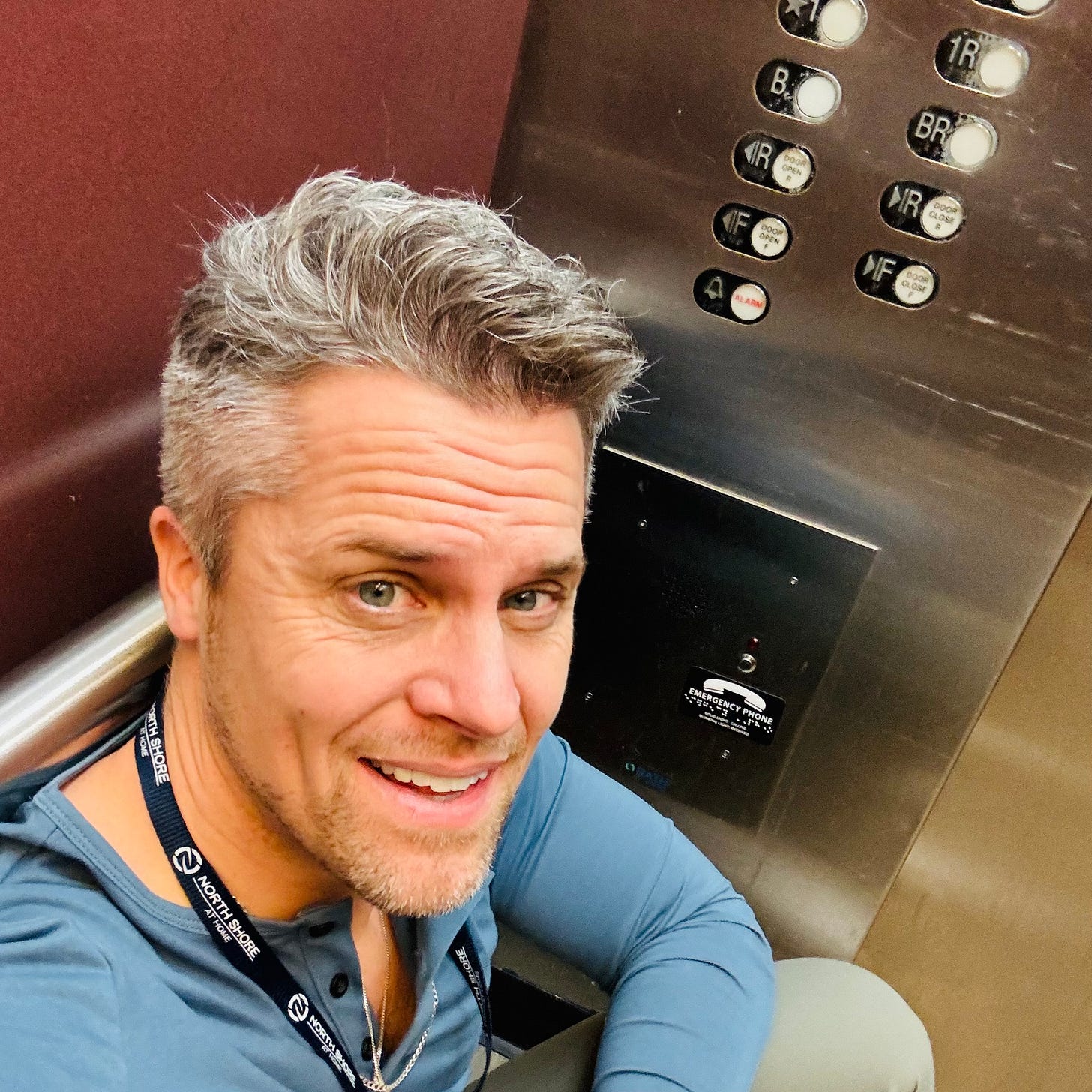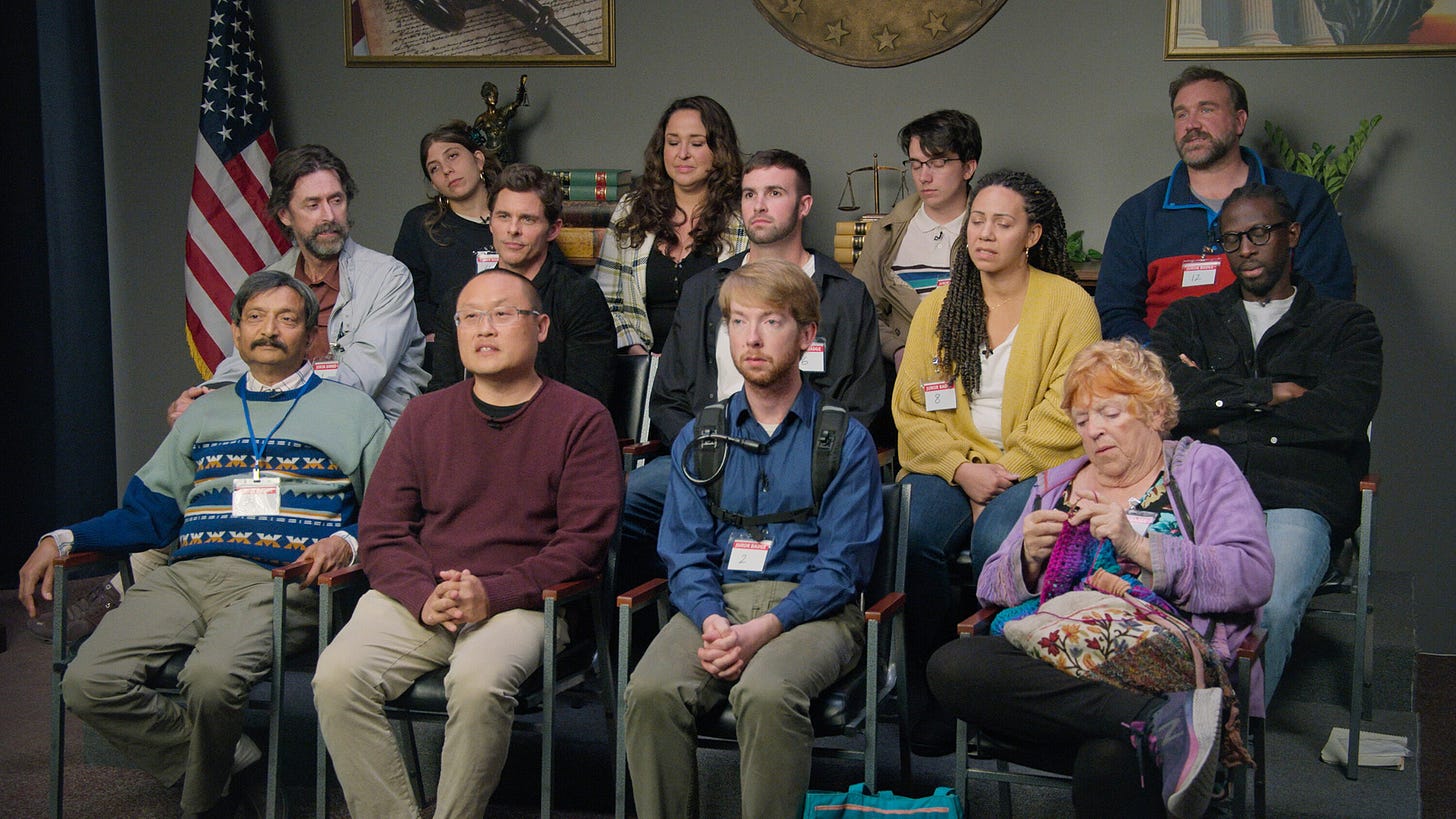
The Formula for Fulfillment
Earlier this month, outgoing Surgeon General of the United States, Vivek Murthy left a “Parting Prescription” for America. The central idea:
Community is the formula for fulfillment.
Community, he says, along with its core pillars—relationships, service, and purpose—improves life satisfaction, cultivates resilience, and even increases life expectancy as it influences health outcomes like premature mortality, heart disease, depression, and anxiety.
Murthy has been highlighting the epidemic of loneliness and the centrality of community for years, so it is fitting that his final message in this unique government role where you communicate important health information while wearing a fancy military uniform is about community.
My Parting Prescription
I wasn’t the Surgeon General and I don’t wear a Navy officer’s uniform, but I want to offer my own “parting prescription” as I wrap up my year as a hospice chaplain (more on the why behind this and what’s next below). And it builds off of Murthy’s prescription, specifically the pillar of “service.”
And actually, I want to go a step further than prescribe.
I want to mandate something.
We don’t have much in the way of “mandatory service” in the US. There currently is no military service requirement, though Congress could authorize a draft if it wanted to. It hasn’t in over 50 years. We do, however, have compulsory jury duty service, though with the right excuse you can try to wiggle your way out of it. You might not get selected into the jury box and be sent home, but you at least have to show up at the courthouse.

In other words, we don’t really ask much of our citizens. That’s why, in the interest of public wellbeing, I decree the following:
Every 40 year-old citizen is required to serve as a hospice companion.
There is debate, but we could say that the age range from 35-45 represents the beginning of midlife, a transition that often comes with many challenges and shifts. It can be a time of confusion and questions, which means it makes people ripe to receive the many benefits that would come with providing end of life care.
Now I certainly think there is some public benefit in having citizens share a common experience. Going through the same thing is a way to create a sense of togetherness. But I’m even more interested in how the experience of accompanying individuals at the end of life would transform the lives of participants and impact their families, workplaces, and communities.
The Benefits of Serving the Dying
Having spent the past three years as a hospice companion (two as a volunteer and one as a chaplain), I can say without a doubt that the dying would benefit from the presence, companionship, and care they would receive from those required to give this mandated service. But I want to highlight how this end of life experience would benefit those in midlife.
1. Life Reflection
Over a decade ago, Australian palliative care nurse Bronnie Ware identified the top regret of the dying: “I wish I had the courage to live a life true to myself, not the life that others expected of me.”
Accompanying the dying acquaints you with your own mortality, providing a powerful invitation to reflect on the status of your own life. Listening to the wisdom, questions, and regrets of the dying fast-forwards you to your own death bed, gives you the opportunity to consider whether here and now you are living the life you want to live or if you are ignoring and postponing your authentic life.
2. Preparation for Death
The human mortality rate is 100%. We’re all gonna die. So why not be prepared?
Being a hospice caregiver prepares you for your own death. It also helps you prepare for the death of your parents and other loved ones. Of course, when a loved one is dying it hits differently. But getting used to the sights, smells, and sounds of death equips you to be a more stable presence in the face of death, allowing you to both be a less anxious presence for your loved ones someday and stay connected to your own grief in that inevitable process.
3. Compassion for the Forgotten
We live in a death-denying society. We like to keep aging and death out of sight and out of mind. Until we can’t. Hospice companionship often brings you into places, such as memory care homes and long-term care facilities, that are filled with people who remain outside the view of society. People who have been forgotten.
This can be difficult to witness, but it is eye-opening and, if we let it, can be heart-opening. It grows our compassion for those who are suffering―both the dying and so many other members of our society whose struggles remain at the periphery of our everyday lives, beyond our care and concern.
4. Rite of Passage
Our modern society is devoid of rites of passage. We are short on helpful containers for our citizens to graduate from one phase of life to the next. Childhood to adolescence. Adolescence to adulthood. Early adulthood to midlife. Midlife to elder.
Midlife is often thought of as a time of “crisis.” But that’s because we don’t acknowledge it as a season of powerful transformation―a “midlife chrysallis,” as my friend Chip Conley calls it.
By mandating hospice companionship at midlife, we are providing a way to symbolically mark the transition into a new season of life. From what is necessarily a more self-centered season of building a life and relationships and work to a new season marked by service and generative contribution to society.
5. Clarify Your Calling
Finally, hospice service has the capacity to awaken dormant gifts. By midlife there are often many aspects of our calling that have been neglected for too long in our work and life. Providing end of life care interrupts our limiting operating patterns, opening us up to shed what is no longer helpful so that we can discover new ways we can impact our communities and the world.
Are You In?
Okay, okay. I realize that this would require screening and training and such (which, by the way, hospice companies are required to provide their volunteers). And maybe it isn’t for everybody. But it certainly is for a lot more people than we realize!
Thoughts?
What other benefits do you see?
How have you been impacted by your experiences with the dying—with your loved ones or in a hospice care role?
Personal Updates
In case you’re interested, here’s why I left my role as a hospice chaplain…
I’ve learned so much from the individuals I had the chance to accompany in the dying process. And I’m inspired by the kindness and care my colleagues showed all of our patients. But it’s time to move on.
Because…
1. My prison meditation work with the WITHIN Project keeps expanding.
2. More incredible people keep coming to me looking for coaching to help them…
Shed their limiting identities.
Cross life’s thresholds.
And unlock their inner greatness.
Can’t wait to tell you more about my coaching program soon! In the meantime, please reach out if you want to jump on a call to learn more.
3. More writing and speaking.
Part of why I haven’t been able to post as regularly on Substack is simply because I didn’t have enough time! Now I’ll have more space to write here, but also continue working on future books, resources, and other writing projects.
Additionally, my book The Way Home is almost a year old, and it hasn’t even learned to walk. This book is just getting started. More people are finding it and it is opening up new opportunities for speaking and teaching. Stay tuned!
4. Hospice Volunteering!
While I’m moving on from my hospice job, I’m not done accompanying and learning from the dying. I plan to volunteer regularly with the hospice company I left. Let me know if you’re interested in learning about how to become a volunteer!



